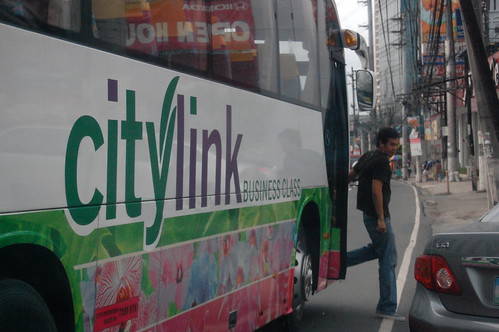
Britanny Cheng
Clean Air Initiative for Asian Cities Center
Standing on EDSA, I wave a bus down and soon a gigantic, smoking heap of metal barrels down the road and suddenly stops less than a foot away from me. I don’t know whether to be impressed by the driver’s spatial awareness or to be frightened that I was almost run over by the bus. I decided on neither and got on the bus; after all, it is my only way to get to work. I quietly sit down on a torn cushion seat and quickly hug my bag close to my body; a habit I have formed to protect my belongings. The bus stands still for another 5 minutes in a futile effort to gain more passengers. Finally, it moves and skilfully weaves out of the bus-ridden lane from whence it came. As the bus noisily rushes through EDSA, my body starts to feel a little numb; it is not used to the constant shaking of the bus. Then, the bus abruptly slows down and squeezes itself into the opposite lane to pick up more passengers. I can’t help but grow irritated at the constant stops of the bus. Again, I wait for the bus driver to give up and continue its course to my work place. However, a street vendor hops on the bus and attempts to sell newspapers and candies while the bus is standing still. Fortunately, immediately after the vendor steps off, the bus was on its way again. I finally arrived at my destination and noticed that the trip from my house in Cubao to my office in Ortigas took an hour and a half; that’s a new speed record. Today was just another weekday at work, but to most readers, this may have sounded like one bad day.
To my surprise, LTFRB chairman Alberto Suansing announced the removal of 4000 buses from the streets of EDSA. To say that my feelings were conflicting was an understatement. A part of me wanted to jump out of joy because I no longer had to fear for my life every single day; however, a part of me was worried about the consequences this sudden change may bring to this already troubled city of Manila. Buses themselves are not the problem. It’s perhaps the whole system. My experience in Singapore and other “richer” cities with buses is actually very pleasant. The buses are quite comfortable and usually reach the destination much quicker -- and definitely much cheaper compared to taxis. Also, a polluting bus may also be equally pollutive as 20 cars. Of course along EDSA, thousands of cars pass everyday. Just imagine how much they contribute to air pollution. I do not support the total abolishment of buses; these are critical assets to Manila’s public transportation; they are cheap, efficient and if maintained properly, eco-friendly. The intention of adding buses is to provide jobs and meet the public’s demand of public transportation; however, the excess of buses actually aggravates the problem rather than solve it, which is its original intention.
I hope that this initiative results in the improvement of the over-all bus system and looking at improving its services for the majority of poor passengers in the metropolis.
Can you tell us, 4000 buses = what percentage of the current fleet?
ReplyDelete